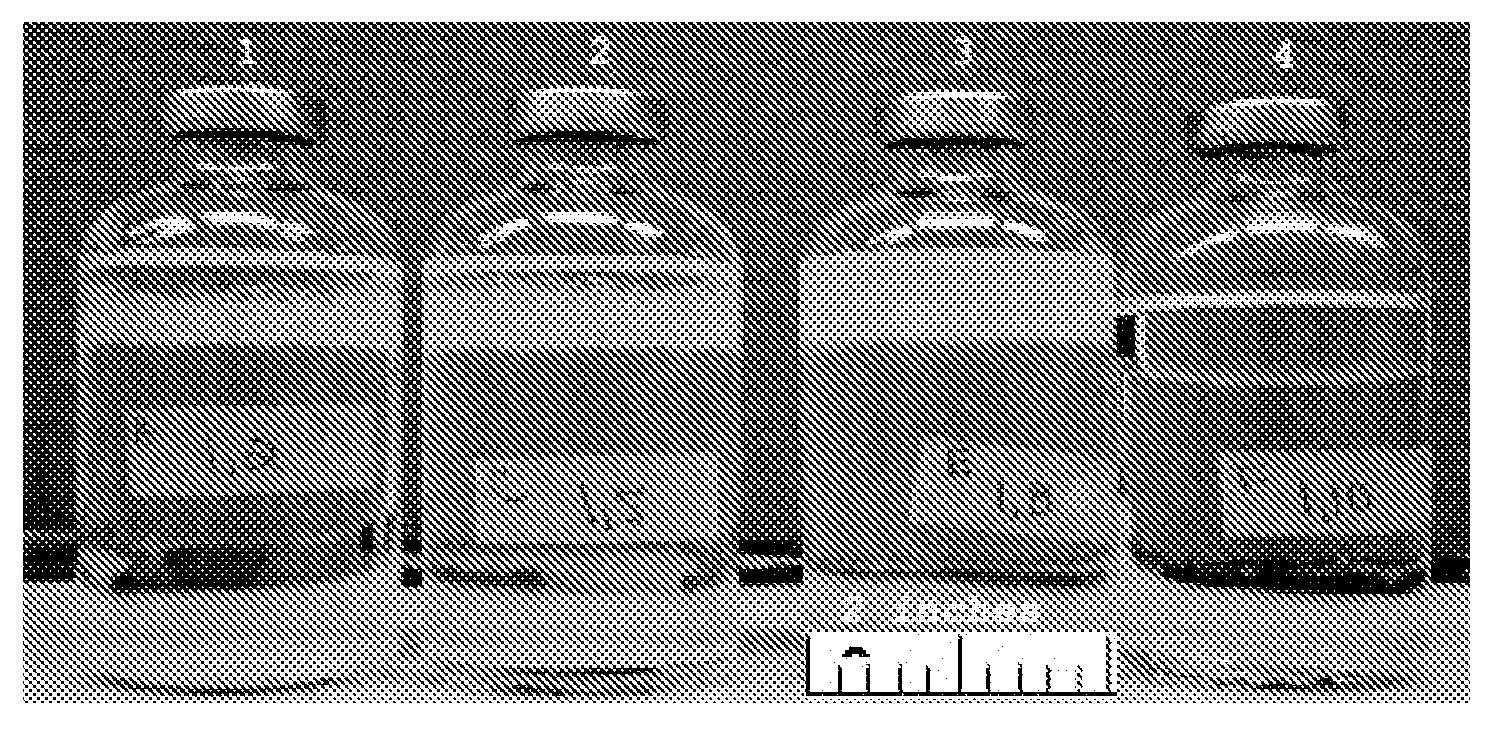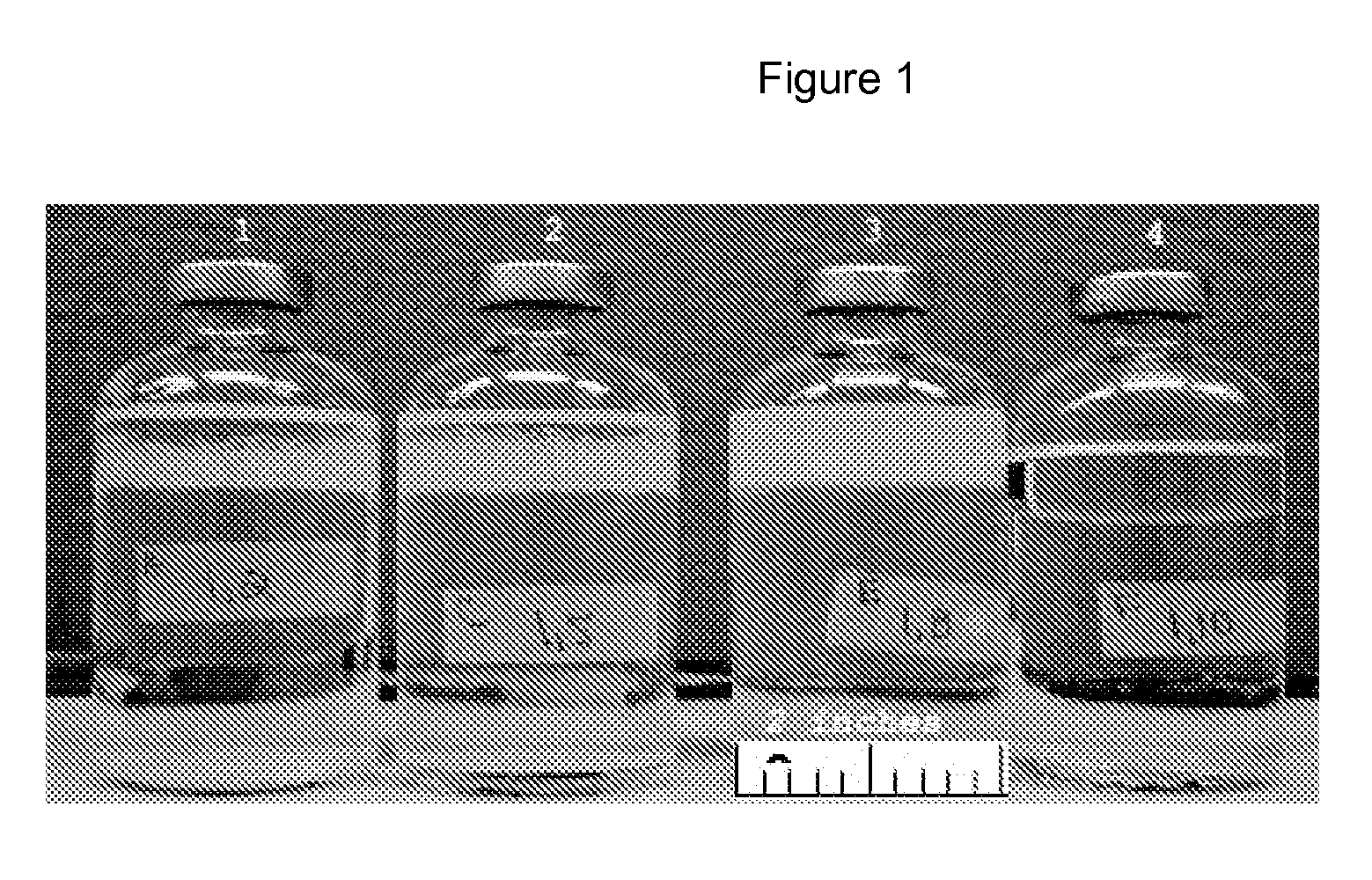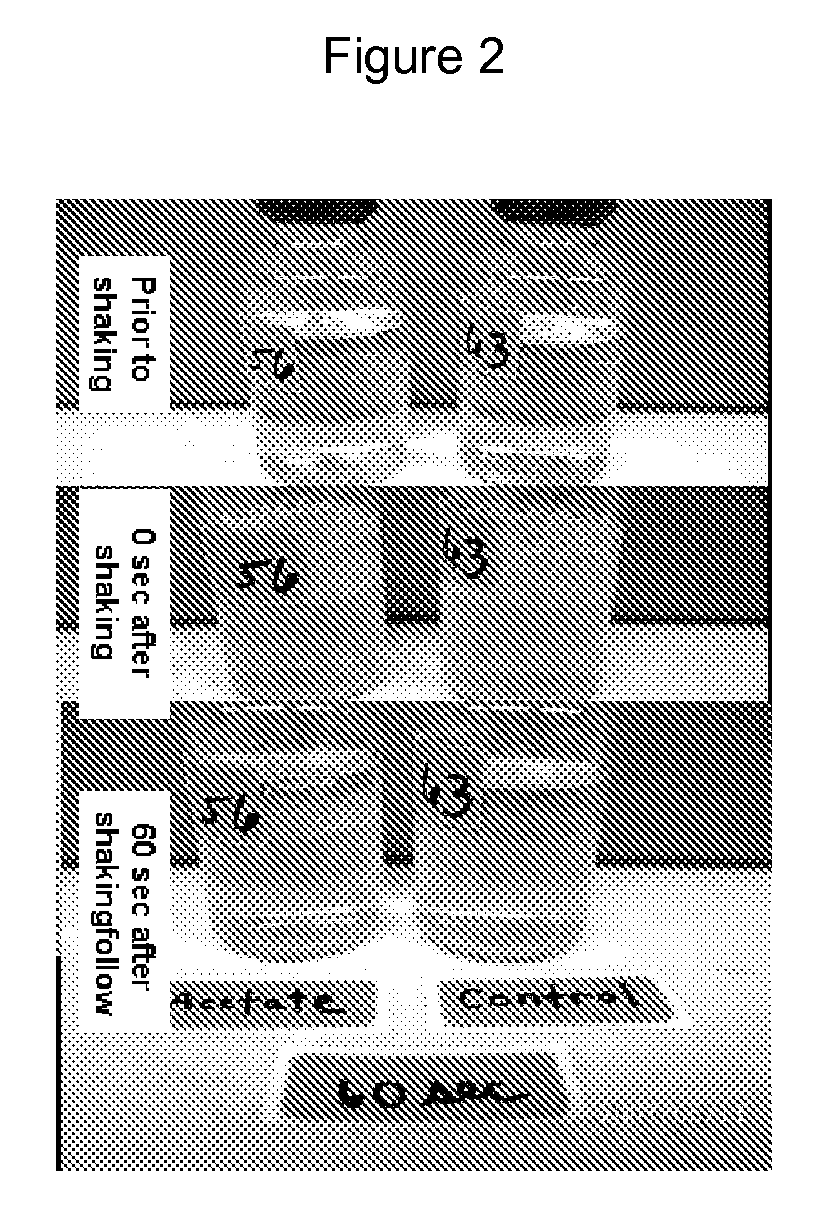Methods for improved hydrocarbon and water compatibility
- Summary
- Abstract
- Description
- Claims
- Application Information
AI Technical Summary
Benefits of technology
Problems solved by technology
Method used
Image
Examples
example 1
The Effect of Various Supplements on the Production of Surface-Active Agents
[0053]Microbial inocula from production water from a North Slope oil well were added to mineral medium #1. The effect of various supplements on the production of surface-active agents was determined. A surrogate oil phase consisting of 1.4% decane, 1% naphthalene, 1% decal in and 96.6% HMN was used in this experiment. Microbial growth occurred under anaerobic, denitrifying conditions at room temperature with shaking at 125 rpm. Analysis of nitrate and nitrite concentrations showed that microbial denitrification was most rapid in treatments receiving acetate. After eight days of growth, emulsification was apparent in a number of the treatments. After allowing the oil-aqueous mixtures to stand for 42 h, a significant emulsion layer remained, except in the control treatment lacking both added supplement and microbial inoculum. This shows that emulsions formed by microbial activity were quite stable. Results in ...
example 2
The Effect of Various Supplements on the Production of Surface-Active Agents
[0054]Two treatments were tested in triplicate, to examine the effect of these treatments on the emulsification of crude oil. Non-sterile oil, 10 mL, from the North Slope was combined with 45 mL of mineral medium #1. As shown in Table 4, sodium acetate was added to a final concentration of 2 g per liter in Test Treatment #2. No acetate was added to Test Treatment #1. In addition, 1 mL of supernatant from treatment number 3 in Example 1 was added to Test Treatment #2. After 10 days, the level of the emulsification was measured in the two sets of treatment vials. The thickness of the emulsified layer was measured 30 minutes after vigorous shaking. As shown in Table 4, the combination of microorganisms from oil+treatment vial 3, example 1 with acetate supplementation developed greater emulsion thickness than the vial without acetate and microorganisms. This example shows that microorganisms causing emulsificati...
example 3
The Effect of Various Carbon and Energy Sources on the Production of Surface-Active Agents
[0055]A variety of carbon and energy sources were tested for their ability to cause endogenous microorganisms from North Slope injection water to generate surface-active compounds. Different carbon / energy supplements were tested for their ability to induce emulsification. Microbial growth, aided by these supplements, occurred under anaerobic, denitrifying conditions at room temperature. The hydrocarbon, HMN, was used as the oil phase in this experiment. To test the resultant emulsifying capability of the treatments, vials were vigorously shaken for 20 seconds to generate an emulsion layer. The time to disappearance of emulsion layer was then measured. FIG. 2 shows an example of this measurement sequence. In all treatments except controls, which did not receive either carbon / energy supplement or carbon and energy source with nitrate, the stability of the emulsion improved over time with microbia...
PUM
 Login to View More
Login to View More Abstract
Description
Claims
Application Information
 Login to View More
Login to View More - R&D
- Intellectual Property
- Life Sciences
- Materials
- Tech Scout
- Unparalleled Data Quality
- Higher Quality Content
- 60% Fewer Hallucinations
Browse by: Latest US Patents, China's latest patents, Technical Efficacy Thesaurus, Application Domain, Technology Topic, Popular Technical Reports.
© 2025 PatSnap. All rights reserved.Legal|Privacy policy|Modern Slavery Act Transparency Statement|Sitemap|About US| Contact US: help@patsnap.com



